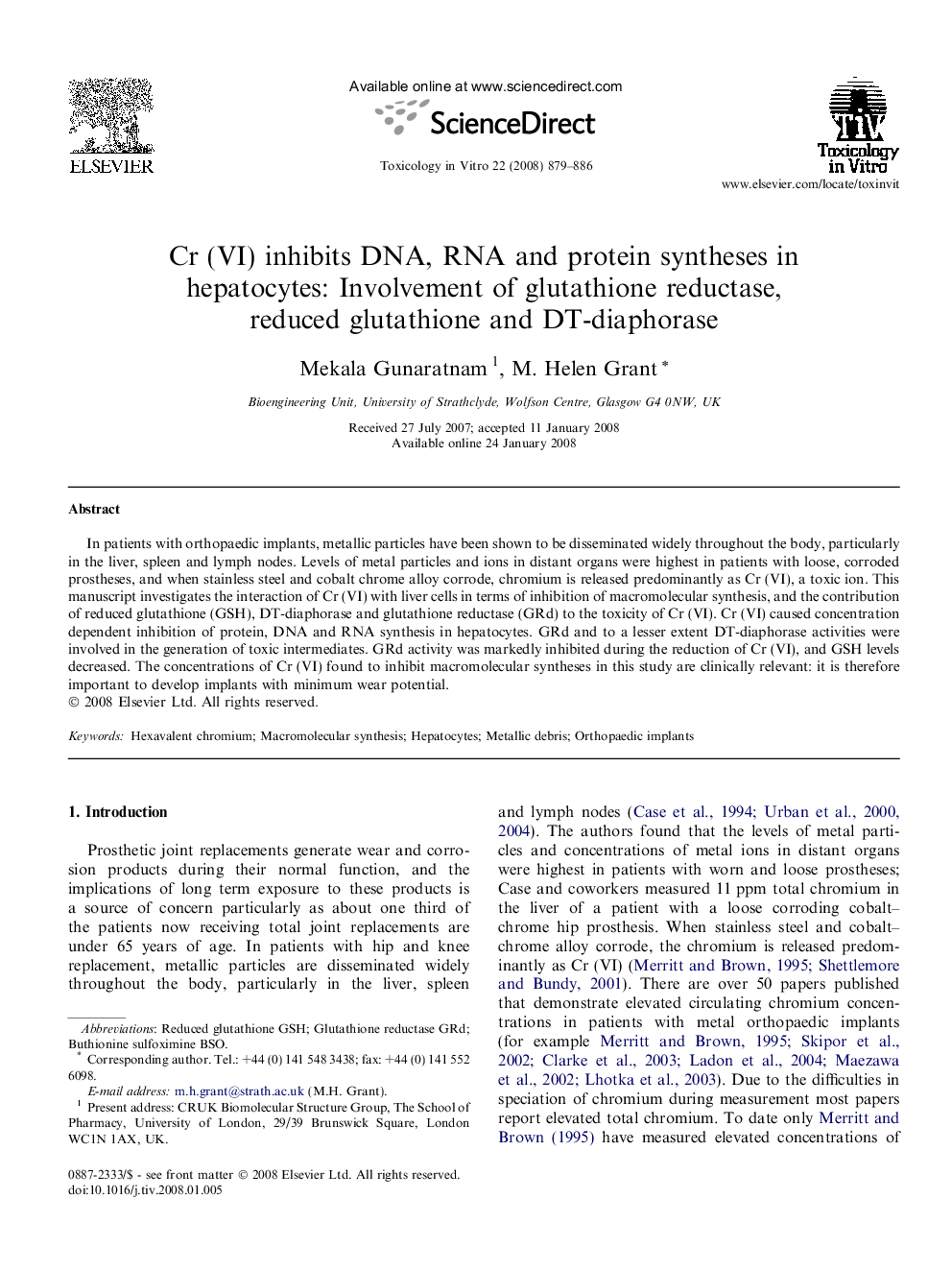| Article ID | Journal | Published Year | Pages | File Type |
|---|---|---|---|---|
| 2603376 | Toxicology in Vitro | 2008 | 8 Pages |
Abstract
In patients with orthopaedic implants, metallic particles have been shown to be disseminated widely throughout the body, particularly in the liver, spleen and lymph nodes. Levels of metal particles and ions in distant organs were highest in patients with loose, corroded prostheses, and when stainless steel and cobalt chrome alloy corrode, chromium is released predominantly as Cr (VI), a toxic ion. This manuscript investigates the interaction of Cr (VI) with liver cells in terms of inhibition of macromolecular synthesis, and the contribution of reduced glutathione (GSH), DT-diaphorase and glutathione reductase (GRd) to the toxicity of Cr (VI). Cr (VI) caused concentration dependent inhibition of protein, DNA and RNA synthesis in hepatocytes. GRd and to a lesser extent DT-diaphorase activities were involved in the generation of toxic intermediates. GRd activity was markedly inhibited during the reduction of Cr (VI), and GSH levels decreased. The concentrations of Cr (VI) found to inhibit macromolecular syntheses in this study are clinically relevant: it is therefore important to develop implants with minimum wear potential.
Keywords
Related Topics
Life Sciences
Environmental Science
Health, Toxicology and Mutagenesis
Authors
Mekala Gunaratnam, M. Helen Grant,
